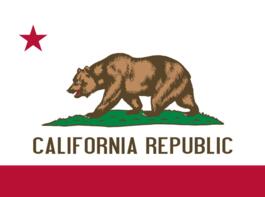California Conquers Partisan Chaos
A Commentary by Froma Harrop
California has found a formula for ending the partisan warfare that once paralyzed its government: Get rid of one of the parties, in this case, the Republican. The state's famously dysfunctional government now hums with calm efficiency.
Democrats there hold a supermajority in the state Legislature, making it well-nigh impossible for Republicans to gum up their plans. The governor, Jerry Brown, is a Democrat, as well.
The nation might avail itself of a similar solution, given the Republican leadership's inability to stop a destructive minority from threatening America's credit rating and turning the country into a global laughingstock (the way California used to be). Moving the House of Representatives into Democratic hands might give us all a needed rest.
But one-party rule can only be a temporary fix. It leads to corruption and arrogance. A Democratic frolic untempered by a sophisticated opposition would soon sour in the mouths of a centrist electorate.
Furthermore, it is California's good fortune that Brown is a business-savvy pragmatist able to fight off liberal excesses in his party.
For example, he vetoed a bill that, shockingly, would have let noncitizens serve on juries. Brown has also been careful to keep a moderately tight rein on spending.
Looking long term, the really important thing happening in California is not the partisan takeover but the political makeover. In 2008 and 2010, California voters passed measures that yanked the pencil for drawing political boundaries out of their politicians' grasp. Before then, incumbents could scheme to stuff their districts with like-thinking voters.
The new law also ditched party primaries. The top two vote-getters in an open primary -- from whatever party or no party -- get to appear on the general election ballot. Thus, a Republican may end up running against another Republican, a Democrat against another Democrat, or either against a Whig.
Ironically, this may be the saving grace for California's much-shrunken GOP. As districts become more politically diverse, Republican right-wingers -- with their inflamed imaginings and inexplicable amount of free time -- see their power to produce sure losers curbed.
Activists on the left also have a harder time creating safe districts. Gone is the 200-mile snake paralleling the liberal coastline around Los Angeles, custom-tailored for former Democratic Rep. Howard Berman.
Under the reforms, a nonpartisan commission drew the lines in a more squared-off shape. Berman's snake was fattened to include the less liberal inland, represented by another Democrat, Brad Sherman. The two ran against each other in November, and Sherman prevailed. One could envision a temperate Republican doing OK here, especially if the national party takes the asylum back from the inmates.
Sacramento is now a model of quiet efficiency. The state's new health insurance exchange is off and running with minimal drama. And there's even a move to ease some environmental regulations at the behest of business.
Other states have embarked on reforms designed to undo the district lines concocted in their capitals' smoky rooms. Iowa, Washington, Arizona and Idaho have been leaders in this, but California has gone the furthest.
Oregon is debating whether to adopt its model.
This new way of conducting elections does more than weaken the partisans' ability to limit our choices in November. It recognizes the growing proportion of unaffiliated voters, 21 percent in California, up from 18 percent in 2005. Over half the states have closed primaries, meaning those belonging to no party have little say until Election Day.
Gerrymandering built safe congressional districts for the most bizarre tea party candidates. Republicans might hesitate to create opportunity for conservative Democrats, but not doing so -- look at their nosedive in national polls -- should alarm them more.
California's Democrats took the risk. So should they.
Follow Froma Harrop on Twitter @FromaHarrop. She can be reached at fharrop@gmail.com. To find out more about Froma Harrop and read features by other Creators writers and cartoonists, visit the Creators Web page at www.creators.com.
COPYRIGHT 2013 CREATORS.COM
Follow Froma Harrop on Twitter @FromaHarrop. She can be reached at fharrop@gmail.com. To find out more about Froma Harrop and read features by other Creators writers and cartoonists, visit the Creators Web page at www.creators.com.
COPYRIGHT 2013 CREATORS.COM
Rasmussen Reports is a media company specializing in the collection, publication and distribution of public opinion information.
We conduct public opinion polls on a variety of topics to inform our audience on events in the news and other topics of interest. To ensure editorial control and independence, we pay for the polls ourselves and generate revenue through the sale of subscriptions, sponsorships, and advertising. Nightly polling on politics, business and lifestyle topics provides the content to update the Rasmussen Reports web site many times each day. If it's in the news, it's in our polls. Additionally, the data drives a daily update newsletter and various media outlets across the country.
Some information, including the Rasmussen Reports daily Presidential Tracking Poll and commentaries are available for free to the general public. Subscriptions are available for $4.95 a month or 34.95 a year that provide subscribers with exclusive access to more than 20 stories per week on upcoming elections, consumer confidence, and issues that affect us all. For those who are really into the numbers, Platinum Members can review demographic crosstabs and a full history of our data.
To learn more about our methodology, click here.



